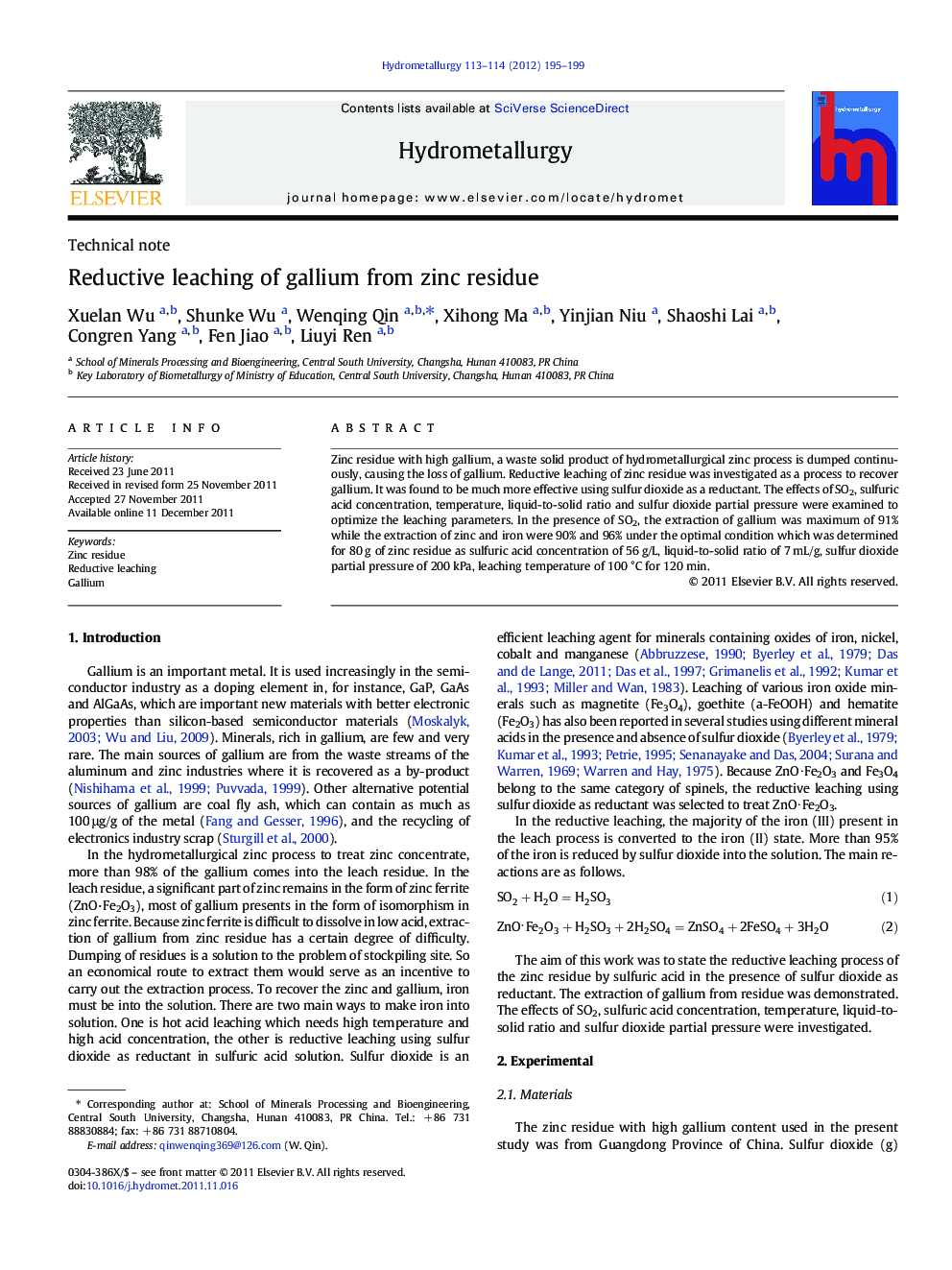| Article ID | Journal | Published Year | Pages | File Type |
|---|---|---|---|---|
| 212592 | Hydrometallurgy | 2012 | 5 Pages |
Zinc residue with high gallium, a waste solid product of hydrometallurgical zinc process is dumped continuously, causing the loss of gallium. Reductive leaching of zinc residue was investigated as a process to recover gallium. It was found to be much more effective using sulfur dioxide as a reductant. The effects of SO2, sulfuric acid concentration, temperature, liquid-to-solid ratio and sulfur dioxide partial pressure were examined to optimize the leaching parameters. In the presence of SO2, the extraction of gallium was maximum of 91% while the extraction of zinc and iron were 90% and 96% under the optimal condition which was determined for 80 g of zinc residue as sulfuric acid concentration of 56 g/L, liquid-to-solid ratio of 7 mL/g, sulfur dioxide partial pressure of 200 kPa, leaching temperature of 100 °C for 120 min.
► In zinc residue, a significant part of zinc remains in the form of zinc ferrite. ► Most of gallium presents in the form of isomorphism in zinc ferrite. ► Reductive leaching of zinc residue was investigated as a process to recover gallium. ► It was found to be much more effective using sulphur dioxide as a reductant. ► In the presence of SO2, Fe3+ into Fe2+, meanwhile Zn2+ and Ga3+ come into solution.
